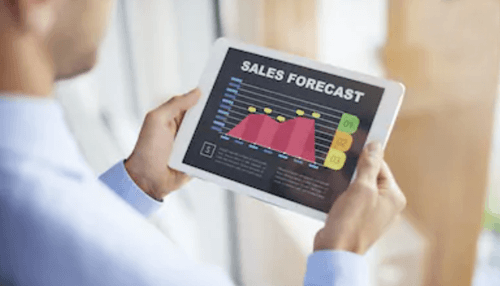When creating a business plan, you need to take into consideration the sales forecast. It directly relates to competitive edge, market analysis, pricing and marketing plan sections. The objective will be to develop as well as justify the sales estimate for the coming three years.
How to derive a Sales Forecast?
Use the bottom-up approach to develop the numbers. Then use the top-down approach to sanity checks them. When developing a financial forecast, the figure is to be decomposed within measurable sub-hypothesis. It allows you to analyze the differences between actual and forecast figures as well as to make adjustments to the hypothesis. Thus, you can gain more accurate forecasts.
Location-based business sales forecasting
If you own a location-based business like a restaurant or a shop, identify the traffic volume other restaurants have here. If your concept is somewhat different, then identify the place where you can expect customers to visit shops with similar products or services. Cover full weekend and one weekday. After traffic estimation, deduct sales numbers by applying conversion rate. Your sales forecast is likely to be:
- 600 people walking on the streets daily.
- 1 among 10 may visit the shop, roughly, 60 people in a day.
- 1 among 5 is likely to buy some time, roughly, 12 sales a day.
- The average item price is $80, roughly, $960 sales a day.
- 30 days working period in a month, roughly $28,800 sales per month.
Lead-based sales forecasting
It is considered to be among the best techniques used to sales forecast and build a business. For example, you may deal in B2B services. You call up customers over the phone to fix a meeting, visit them and close the deal. To forecast sales, estimate the average number of calls made in a day. Then deduct the number of appointments made with potential customers. This forecast should be based on the achieved estimated success rate. Again apply the estimated success rate for deducting sales volume from the number of appointments held. Instead of a global conversion ratio, work on your sales funnel. This way, you can smoothly track all intermediary steps involved and make necessary adjustments in your sales forecast as required. It offers greater clarity to know the kind of conversion rate your business enjoys with each step.
Your forecast is likely to appear in this manner using this technique:
- 250 phone calls generated monthly by two sales representatives.
- 1 out of 4 phone calls leads to an appointment, deriving 50 meetings per month.
- 1 out of 10 meetings results in a closure, meaning 5 sales a month.
- The average sale price is $50,000, meaning the monthly forecast is $250,000.
Using competition to estimate sales
Businesses that are not location-driven are found to be more complicated. If you own such type of business, then identify accounts of similar type of businesses or competitors’ accounts. Such accounts can provide you with historical sales figures using which, historical volume sold can be determined. Then use rations like sales/employees or sales volume / square meter for effective sales forecasting.
It indicates what can be delivered precisely by a mature business. if you own a new business, then it is likely to take some time to reach this position. Therefore, try to estimate your ramp-up. If you rely on your distributors for sales generation, then they should provide an estimate. However, avoid taking such crucial information at face value. Rather, include some discounts to be better prepared to face bad surprises.
Conclusion
You need to use the bottom-up approach to ensure constructive results. This way, you can determine the right sales forecast and establish your business goals correctly.



